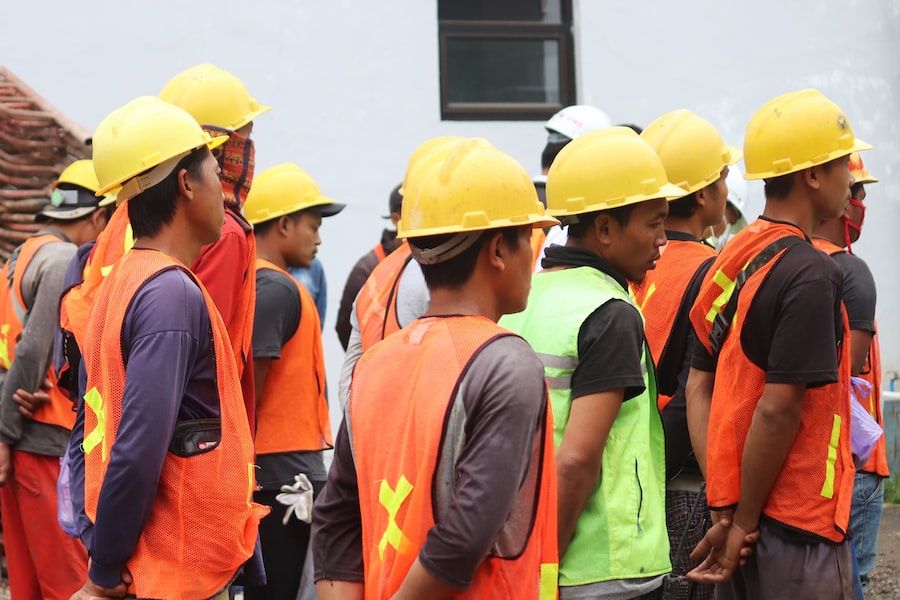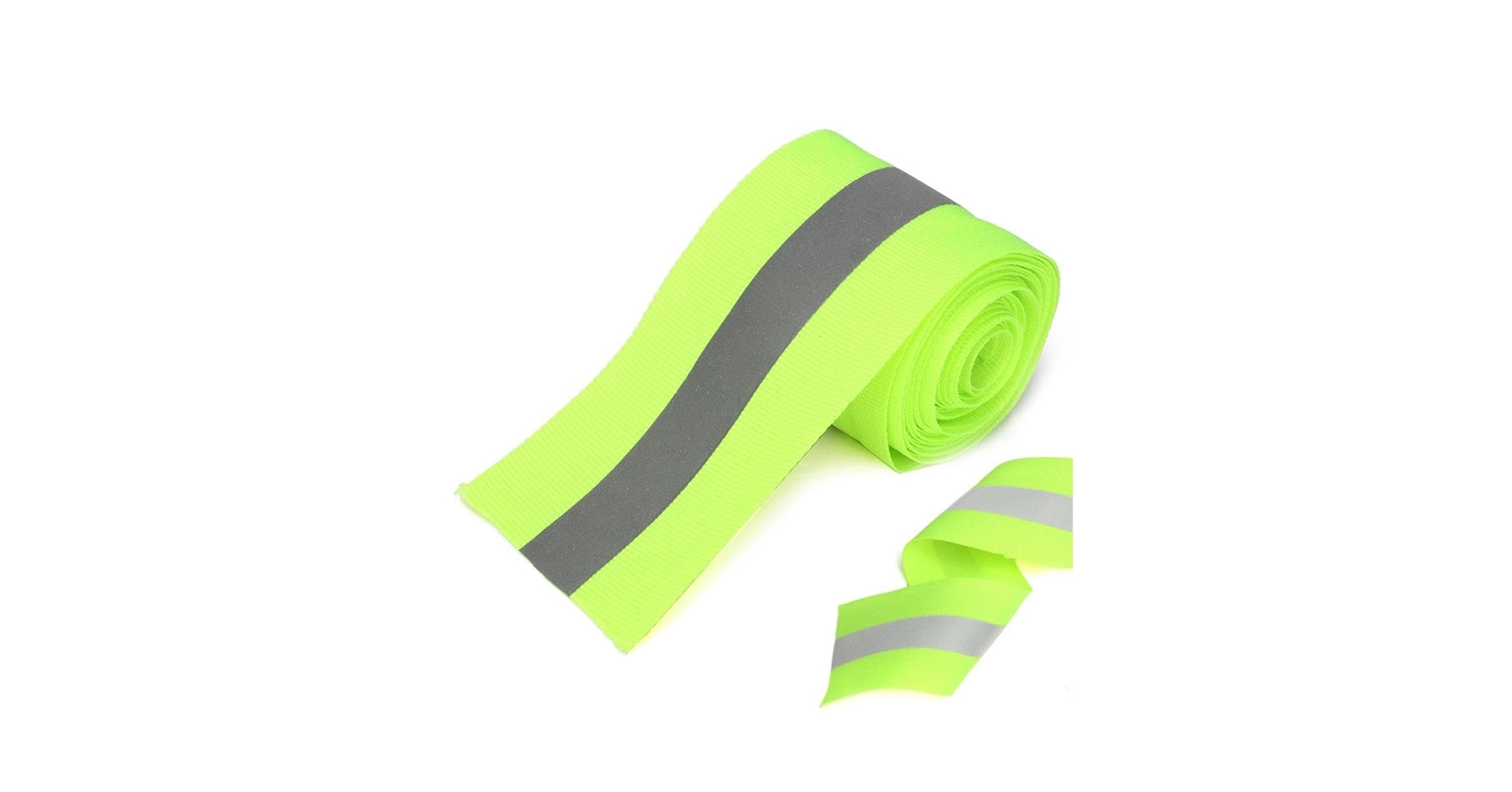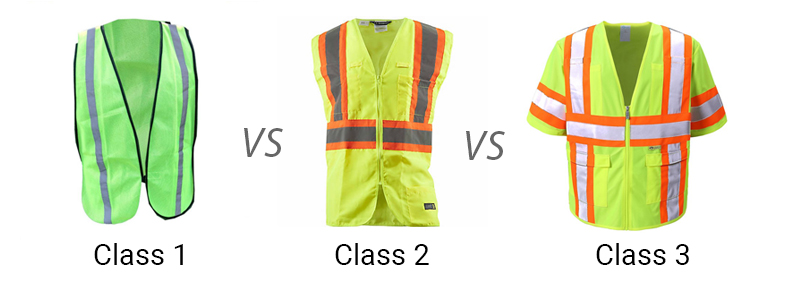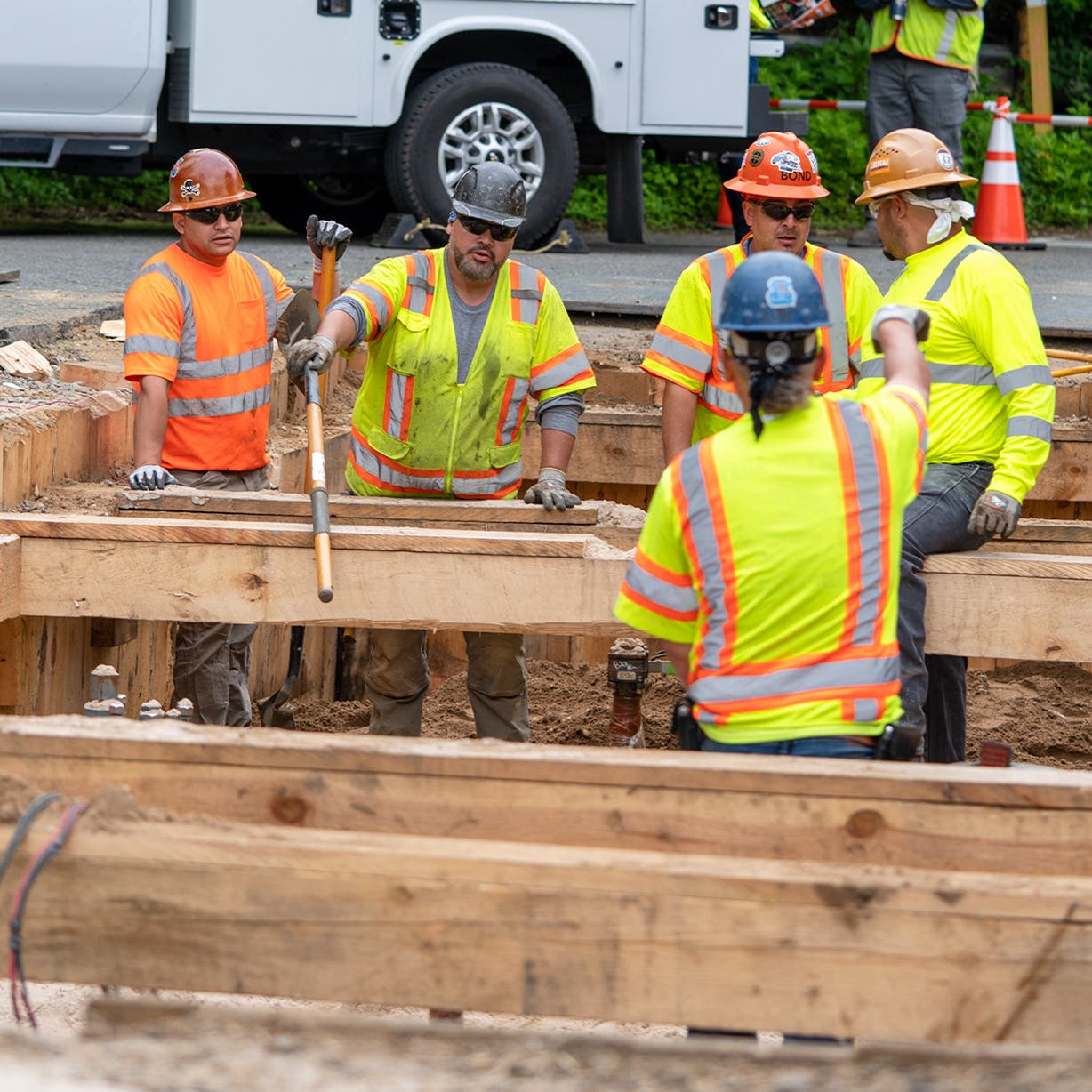
When it comes to workplace safety, few items are as instantly recognisable – or as critically important – as hi-vis clothing. Whether you're working on a motorway, a construction site, or in a warehouse, high visibility workwear can literally be the difference between life and death.
But with different classes, colours, and standards to navigate, choosing the right hi-vis clothing can feel overwhelming. This comprehensive guide will help you understand everything you need to know about high visibility workwear.
What Is Hi-Vis Clothing and Why Is It Important?
Hi-vis clothing (also called high visibility or reflective workwear) is specially designed to make the wearer easily visible in hazardous environments. The clothing uses fluorescent background materials combined with reflective tape to ensure workers can be seen clearly in both daylight and low-light conditions.
Think of it like a lighthouse for your body – just as a lighthouse uses bright colours and reflective light to warn ships of danger, hi-vis workwear uses fluorescent fabric and reflective strips to alert vehicle drivers and machine operators to your presence.

High-quality reflective tape showing the retroreflective properties that make hi-vis workwear effective in low-light conditions
When Is Hi-Vis Clothing Legally Required?
In the UK, hi-vis clothing is mandated under the Personal Protective Equipment at Work Regulations 1992 and the Health and Safety at Work Act 1974. Your employer must provide appropriate hi-vis workwear if you work in environments where there's a risk from moving vehicles or equipment. Whether you're based in Hinckley, Leicester, or anywhere across the UK, these regulations apply to ensure worker safety.
Industries that commonly require hi-vis clothing include:
- Road construction and highway maintenance
- Railway work
- Construction sites
- Warehousing and logistics
- Airports and docks
- Emergency services
- Utilities and telecommunications
- Traffic management
- Waste collection and recycling
Understanding Hi-Vis Standards: EN ISO 20471
The European standard EN ISO 20471 classifies high visibility clothing into three classes based on the amount and placement of visible material. Understanding these classes is essential for compliance and safety.

Visual comparison of Class 1, 2, and 3 hi-vis safety vests showing the increasing levels of fluorescent material and reflective tape coverage
Class 1 Hi-Vis Clothing
Minimum visible area: 0.14m² fluorescent material, 0.10m² reflective tape
Best for: Low-risk environments, warehouse work, parking attendants
Typical items: Hi-vis vests, tabards
Traffic speeds: Areas with slow-moving vehicles or good visibility
Class 2 Hi-Vis Clothing
Minimum visible area: 0.50m² fluorescent material, 0.13m² reflective tape
Best for: Medium-risk environments, roadside work, construction sites
Typical items: Hi-vis jackets, long-sleeve shirts, trousers
Traffic speeds: Roads with traffic moving up to 30mph
Class 3 Hi-Vis Clothing
Minimum visible area: 0.80m² fluorescent material, 0.20m² reflective tape
Best for: High-risk environments, motorway work, night operations
Typical items: Hi-vis coats, coveralls, jackets with sleeves
Traffic speeds: High-speed roads, motorways, or very poor visibility conditions
Important: The class required depends on your risk assessment, not just your preference. Always follow your employer's safety policy.
Hi-Vis Colours: Does It Matter?
Hi-vis clothing comes in three standard colours, each with specific uses:
Yellow/Lime
Most Common
Excellent contrast against most backgrounds
Preferred for road work and construction
Orange
Better contrast in woodland
Common in forestry and railway work
Good for dusty conditions
Red
Less common but approved
Used in specific industries
Good for role differentiation
Day-Glo vs. Reflective: Understanding the Difference
Hi-vis clothing works through two different mechanisms:
Fluorescent (Day-Glo) Material:
- Works by absorbing UV light and re-emitting it as visible light
- Makes you highly visible in daylight
- Becomes less effective at night when there's no UV light
Reflective Tape:
- Works by bouncing light back to its source (retroreflection)
- Essential for night-time and low-light visibility
- Requires a light source (headlights, torches) to be effective
The most effective hi-vis clothing combines both elements, ensuring 24-hour visibility.
Seasonal Hi-Vis: Staying Visible Year-Round
Your hi-vis needs change with the seasons. Here's how to stay protected whatever the weather:
Summer Hi-Vis Options
- Lightweight mesh vests for breathability
- Short-sleeve hi-vis polo shirts
- Hi-vis shorts for extreme heat
- Moisture-wicking fabrics
Winter Hi-Vis Solutions
- Insulated hi-vis bomber jackets
- Hi-vis waterproof parkas
- Thermal hi-vis coveralls
- Layerable hi-vis gilets
Pro tip: In winter, ensure your outer hi-vis layer is the highest class required – wearing a Class 3 jacket over a Class 2 vest doesn't give you Class 3 protection if the vest is hidden underneath.
Hi-Vis Care and Maintenance
Proper care ensures your hi-vis clothing maintains its protective properties:
Washing Guidelines:
- Follow manufacturer's instructions carefully
- Wash at temperatures no higher than 40°C
- Use mild detergent only (no bleach or fabric softener)
- Reflective tape can degrade with harsh chemicals
- Air dry when possible; avoid high heat tumble drying
Inspection and Replacement:
- Check hi-vis clothing before each shift
- Look for faded fluorescent material
- Inspect reflective tape for cracks or peeling
- Replace if material is torn or compromised
- Most hi-vis clothing has a lifespan of 50-100 washes

Regular inspection and proper maintenance are crucial for ensuring hi-vis workwear remains effective and compliant with safety standards
Common Hi-Vis Mistakes to Avoid
- ❌ Wearing dirty or faded hi-vis: Reduces visibility significantly
- ❌ Covering hi-vis with non-hi-vis clothing: Defeats the purpose
- ❌ Wearing the wrong class for your environment: Non-compliant and dangerous
- ❌ Choosing based on price alone: Your life is worth the investment
- ❌ Ignoring fit: Loose hi-vis can get caught in machinery
Hi-Vis Workwear Supply in Hinckley & Leicester
Based in Hinckley, Leicester, Workwear Direct is your trusted local supplier of high-quality hi-vis clothing and safety workwear. We understand the unique requirements of businesses across Leicester, Hinckley, and the wider Midlands region.
Our comprehensive range includes everything from Class 1 hi-vis vests for warehouse operations to Class 3 winter jackets for highway maintenance teams. Whether you're a construction company in Leicester city centre or a logistics firm in Hinckley, we have the expertise and stock levels to meet your safety requirements.
Local Service Benefits: Fast delivery across Hinckley and Leicester • Expert advice from local safety specialists • Bulk order discounts for Leicester area businesses • Same-day collection available from our Hinckley location
Conclusion
Hi-vis clothing is more than just a legal requirement – it's your most visible line of defence in hazardous work environments. By understanding the classes, standards, and proper usage, you can ensure you're not just compliant, but genuinely protected.
Remember, the best hi-vis clothing is the one that's appropriate for your specific job, properly maintained, and worn correctly every single day. For businesses in Hinckley, Leicester and across the UK, Workwear Direct provides the expertise and quality products you need to keep your team safe and compliant.
Ready to Upgrade Your Hi-Vis Workwear?
Browse our complete range of certified high visibility clothing at Workwear Direct. Serving Hinckley, Leicester and across the UK. From Class 1 vests to Class 3 winter jackets, we have everything you need to stay safe and visible.
Shop Hi-Vis Clothing Get Expert Advice

